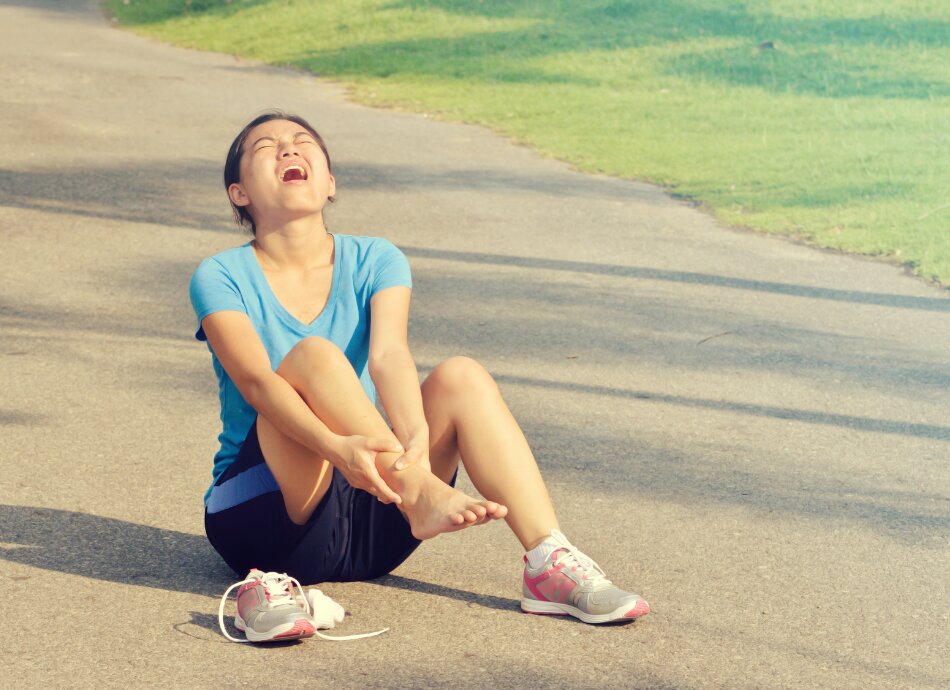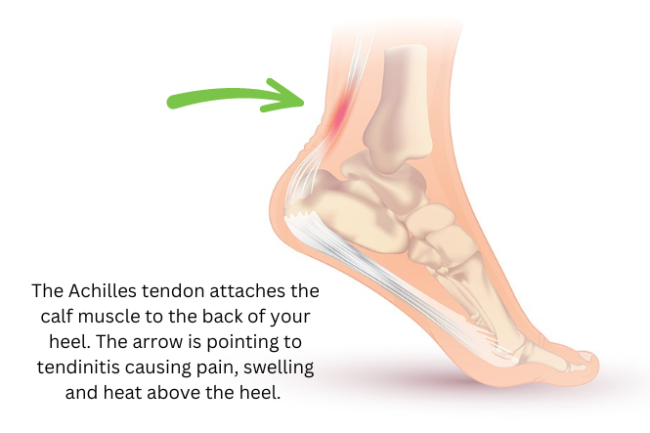Wishing everyone happy holidays and a joyful New Year from the Healthify team. Don't forget to Slip, Slop, Slap and Wrap!
Tendinitis
Also known as tendonitis
Key points about tendinitis
- Tendinitis is inflammation of a tendon (iohere) – the tough cord-like tissue that connects a muscle to the bone. The tendon swells, becoming painful and tender.
- You may notice stiffness of the affected joint and muscle weakness. The skin over the area may also feel warm to touch.
- Mild cases of tendinitis can be treated at home and will get better in 2–3 weeks. However, you should go straight to a healthcare provider if you're in a lot of pain, you can't walk, or you think you've ruptured (or torn) a tendon.
- They are likely to be able to make a diagnosis from talking to you about your symptoms and doing an examination. You may need an X-ray or another imaging technique to rule out other possibilities.

Tendinitis can be caused by an overuse injury when playing a sport (eg, repetitive jumping or throwing) or by sudden, sharp movements. It can also be caused by repetitive activities (eg, hairdressing, decorating, typing) or having poor posture when sitting or standing at work. This is also known as a repetitive strain injury (RSI).
Some common names for tendinitis affecting different areas of the body include:
- tennis elbow
- rotator cuff tendinitis (pitcher's shoulder, swimmer's shoulder)
- jumper's knee
- Achilles tendinitis (see image below).

Image credit: Injury map(external link) – free human anatomy illustrations
There are some things you can try at home but if you are in severe pain you need to consult a healthcare provider for diagnosis and advice.
Tendinitis responds well to P.R.I.C.E (protection, rest, ice, compression and elevation).
- Protection: Protect from further injury by using a support if appropriate (eg, an injured leg or foot may be protected by limiting weight-bearing through the use of crutches or a walking stick. An injured area could be supported with a sling or a brace).
- Rest: Avoid activities that cause pain for 48–72 hours.
- Ice: Apply ice wrapped in a damp towel (or a bag of frozen peas wrapped in a tea towel) for 20 minutes every 2–3 hours during the day for the first 2–3 days.
- Compression: Use supportive bandages or wraps (eg, an elastic bandage or tubular bandage). But make sure you remove them all before going to bed.
- Elevation: Hold the leg, hand or arm up in a raised position, supported by a pillow.
Avoid H.A.R.M (heat, alcohol, running and massage) for the first few days after the injury as they can make the swelling worse.
- Heat: No hot baths or heat packs.
- Alcohol: Don't drink alcohol.
- Running: Don't run or do any other vigorous exercise.
- Massage: Don't massage the area.
Ask a pharmacist about which pain medication (eg, paracetamol or ibuprofen) is right for you. They can also advise on whether a cream or gel will be helpful.
Once the inflammation (swelling) and pain have decreased, specific exercises can help make the tendon strong and avoid further problems. A physiotherapist can advise you about these.
Apps reviewed by Healthify
You may find it useful to look at some Physiotherapy and exercise apps, Pain management apps, and Joint and bone health apps.
If the symptoms don't start getting better after treating them at home for a few days, see your healthcare provider or a physiotherapist. Sometimes other treatments are needed.
Other treatments include:
- splinting
- cortisone (steroid) injections directly into the site of inflammation
- ultrasound therapy which may speed up healing
- physiotherapy
- surgery – in severe cases the tendon may rupture (tear) and will need to be surgically repaired.
Tendinitis can't always be prevented, but there are some things you can do to reduce your risk of tendon injuries.
- Warm up before exercise and stretch afterwards.
- If you're doing a repetitive exercise or activity, take breaks.
- If you're starting a new exercise programme, start low and go slow.
- Gradually build up repetitions, weights or total time.
- Stop and review if pain occurs.
Get expert help if you experience recurrent pain or problems.
Management of heel pain(external link) Counties Manukau Health, NZ
Tendonitis(external link) NHS, UK (video at the bottom of the page)
Jumper's knee(external link) Kids Health from The Nemours Foundation, US
Rotator cuff problems(external link) Medline Plus, US
Achilles tendinitis (external link) American Academy of Orthopedic Surgeons, US
Tendinitis exercise videos(external link) Ask Dr Jo, Physical Therapist and Doctor of Physical Therapy, US (note that watching these should not replace going to see a healthcare provider)
Stretches to relieve peroneal tendonitis(external link) Healthline, US
Apps
Physiotherapy and exercise apps
Pain management apps
Joint and bone health apps
References
- Jumper's knee(external link) Kids Health from The Nemours Foundation, US
- Tendonitis(external link) NI Direct, UK
- Achilles tendinitis(external link) Orthoinfo American Academy of Orthopaedic Surgeons, US, 2022
- Repetitive strain injury(external link) NHS, UK, 2022
Credits: Healthify editorial team. Healthify is brought to you by Health Navigator Charitable Trust.
Reviewed by: Associate Professor Sue Wells, Public Health Physician, University of Auckland
Last reviewed:
Page last updated:





